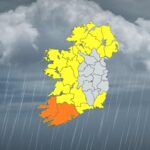
Study Links CO₂ Surge to Ancient Mass Extinction

A major new study has confirmed that a sudden surge in CO₂ triggered massive ocean acidification and wiped out huge swathes of marine life 201 million years ago.
Researchers from the University of St Andrews and the University of Birmingham have, for the first time, reconstructed ancient ocean pH levels from the time of the Triassic–Jurassic mass extinction. Their findings, published today in Nature Communications, show a dramatic drop in ocean pH, linked to volcanic CO₂ from the breakup of the supercontinent Pangaea.
The result? Coral reefs vanished, iconic marine creatures like ammonites were devastated, and the oceans took hundreds of thousands of years to recover.
The acidification event—now proven for three of Earth’s five biggest extinctions—was driven by a CO₂ spike that doubled atmospheric levels and slashed ocean pH by more than 0.4 units. That’s on par with worst-case projections for the coming century—only today’s emissions are rising much faster.
Before the extinction, ocean pH levels were similar to today’s average of 8.2. The rapid shift led to widespread ecosystem collapse. Irish researchers have warned that the pace of modern-day acidification could push marine life past a tipping point.
Dr James Rae, co-author of the study, said: “This shows how fast and far-reaching the effects of carbon release can be. We’re seeing echoes of this ancient crisis in our own oceans today.”
The study used chemical clues in fossilised oysters to trace the carbon’s source and impact. While volcanic in origin 200 million years ago, today’s CO₂ surge is driven by human activity—from burning fossil fuels to deforestation.
Dr Sarah Greene, who co-led the research, warned: “The ancient extinction happened over thousands of years. We’re on track to reach similar acidification levels in just a few decades.”
Share this WeathÉire story:







